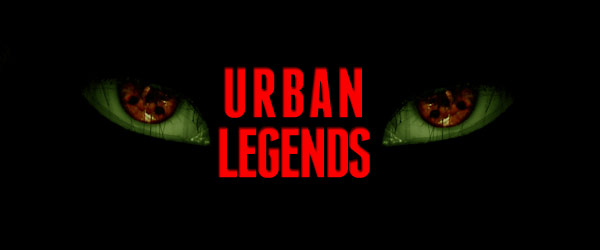Missing Urban Legends August 2, 2017
Author: Beach Combing | in : Modern , trackbackIn the 1970s folklorists lightened up and realised that folklore was not just about elves, witches and weather prognostications. Modern beliefs involving swallowed melon seeds and superstitions about cars from suburbia were also fair game. With this new revelation, several excited young men and women went out and began collecting tales and started writing about puppies in microwaves and spiders nests in beehive hair do’s.
There was, then, the inevitable dust up about what to call these stories and the first term to be offered up to the gods of knowledge was ‘urban legend’, followed by ‘popular legend’, followed by ‘contemporary legend’. However, as the years passed, the collectors came to realize that these ‘contemporary legends’ were also, often, to be found in texts dating back to the Middle Ages and to Antiquity.
So not so ‘contemporary’ then? Well, academics hate giving up terms. It was, thus, argued that they were ‘contemporary’ because they were ‘contemporary’ for the Renaissance merchants or Roman legionaries who were telling them and who believed them. OK?
Beach loves the grittiness of ‘contemporary legend’, but he absolutely fails to see any difference between these legends and other legends told by Romans, medieval sorts and anyone else, for that matter. For example, there are plenty of fairy legends from the middle ages that were clearly believed by those recounting them. Why are these not contemporary legends, then?
The most truthful terms for ‘contemporary legends’ would be ‘discarded legends’ because these were the tales that were left behind by the first folklorists in the nineteenth century: they did not fit preconceptions about what folklore should look and feel like (‘prior folklore’). If you are a folklorist living in London in the 1880s the stories from rural Sussex about dancing skeletons around trees was folklore. However, the legendary tales about pickpockets working in the street where you lived were not.
Anyone who has lived for more than twenty years in the world should be patient about how knowledge is amassed chaotically and how terms do not reflect reality. But sometimes these reflexes of our imperfect minds change the way we assess reality.
Folklorists began to collect ‘contemporary legends’ systematically from the 1970s onwards – though in truth there had been serious efforts for some tales, since the 1950s. The result of all this is that ‘discarded legends’ from the 1950s onwards were collected. But contemporary legends from before the 1950s had often been discarded in the 1810s or 1910s and now were lost to sight.
This means that a book on Victorian or Elizabethan Urban Legends would be a truly revolutionary work because it would not just bring in all the legends from the 1500s or 1800s. Many, perhaps most (?) legends recorded would be new.
A final thought, anticipating objections. There is a romantic and false idea that the urban legends that we tell today have always been with us in one form or another. Yes, some contemporary legends can be tracked back continuously to the earliest written records. Beach suspects, though, that these are the exception not the rule. There were no medieval microwaves…
Any defence of contemporary legends: drbeachcombing At yahoo DOT com
2 Aug 2017: Chris S writes, More than a few years ago I went to a talk given by Brian Regal on the Jersey Devil. As typical of Americans, he’s sharply opinionated and closed-minded. Anytime someone brought up something like “bigfoot”, he’d shout “Fake! Not real!” When I addressed him, mentioning some of the compelling physical evidence and explanations for an absence of evidence he did backpedal saying, “I’m just a history professor” before going on fake. He was particularly interested in the concept of “fakelore”, which is folklore that’s not widely accepted into the oeuvre of a culture, regional or national. I reckon the stories told by kids in the woods, whispered at slumber parties, or laughed about at bars may only be told once or twice before dying on the vine but the seed has been sown. Like a game of Telephone, the stories morph, they merge into similar stories and plotlines, eventually giving rise to the urban legends of the 22nd century, the lore and legends our descendents will explore and meditate upon regardless of their authenticity. Computer memory is cheap. Pen and paper are just as cheap. Each are equally fragile, but from these the vague origins of Slenderman, the Blair Witch, the Jersey Devil, et al. historians, folklorists, and forteans will have an unprecedented, well-accounted lineage for the future’s tall tales. Better yet, they’ll have the stories and accounts from the proletariat who tend to vanish into history’s background radiation. If only contemporary researchers had those for the 14th, 15th, and 16th centuries our understanding of western culture would be much richer. Anyway, that’s my defense. All great things have small origins. Why lose them for the ages because a contemporary dismisses them out of hand?



